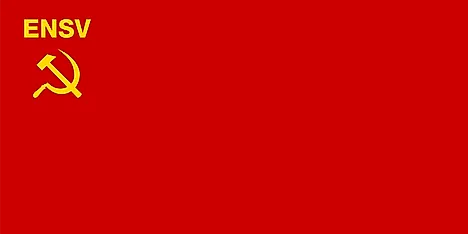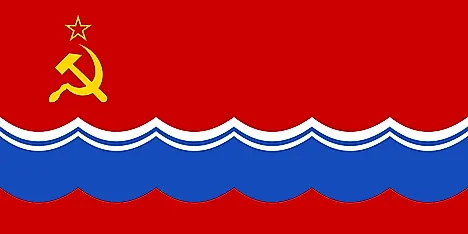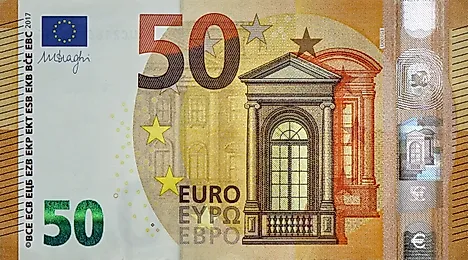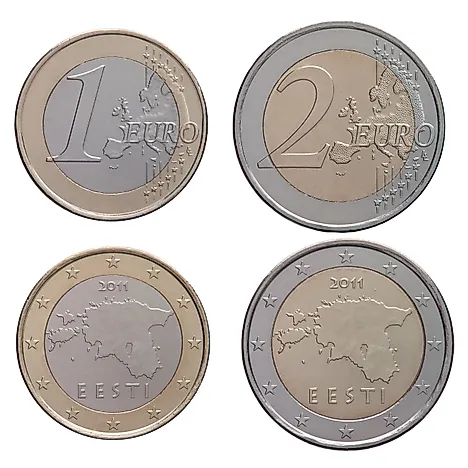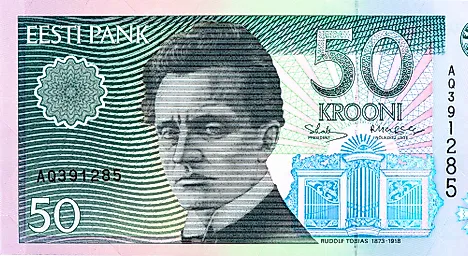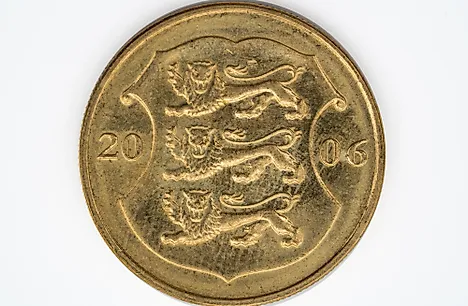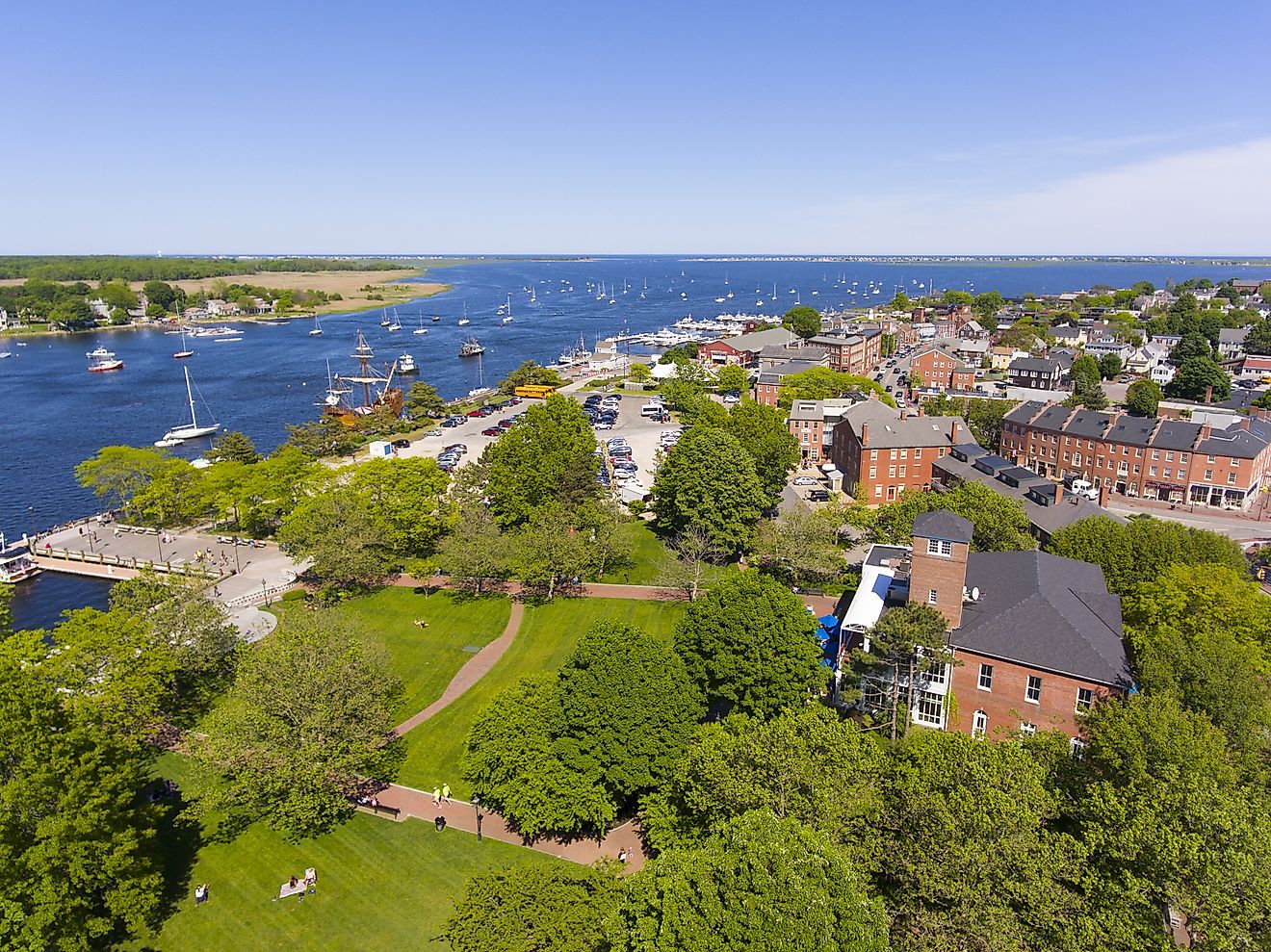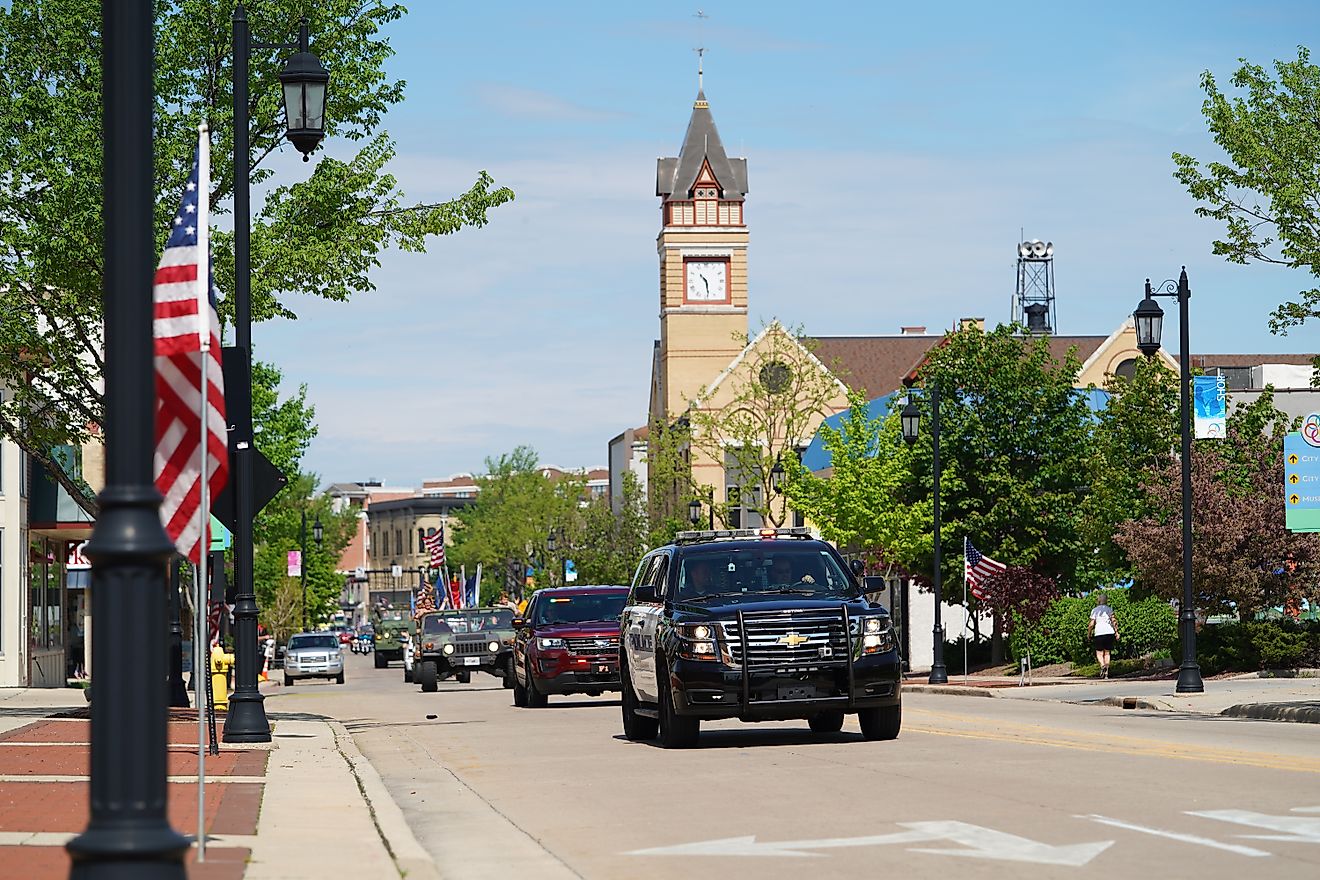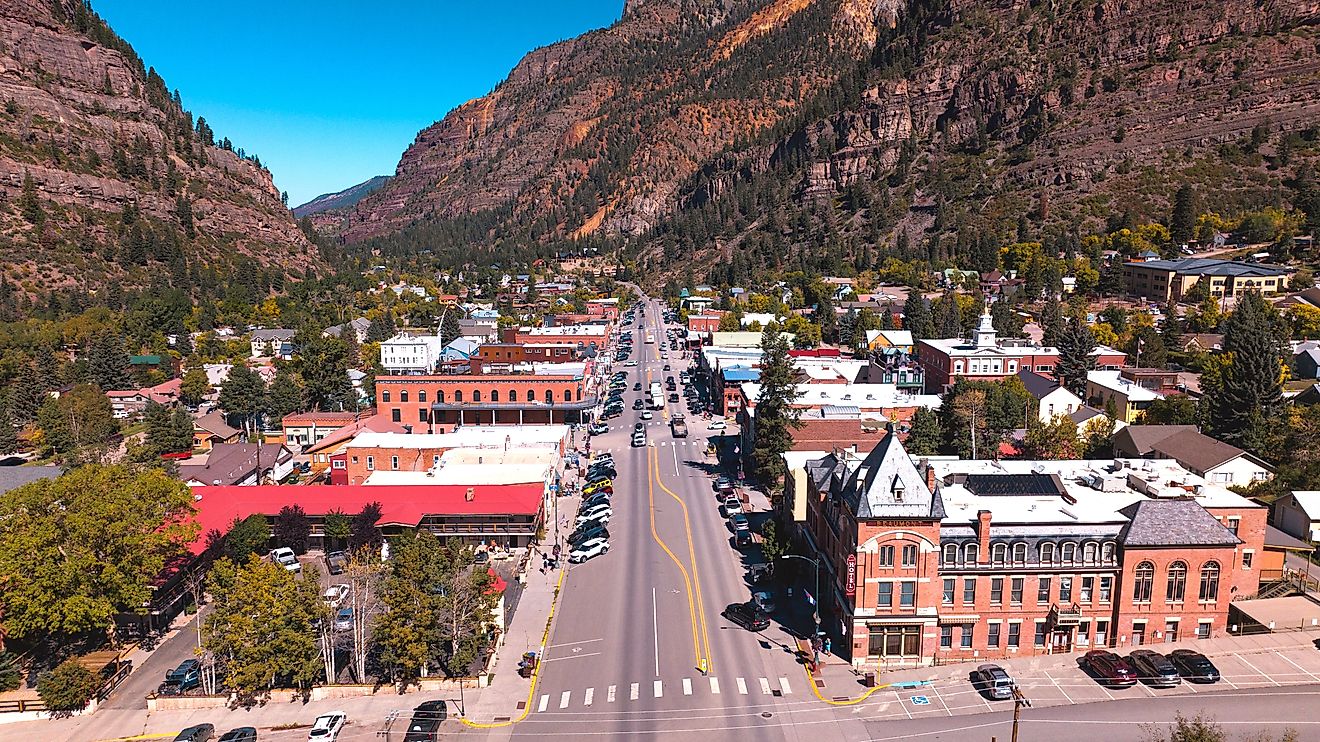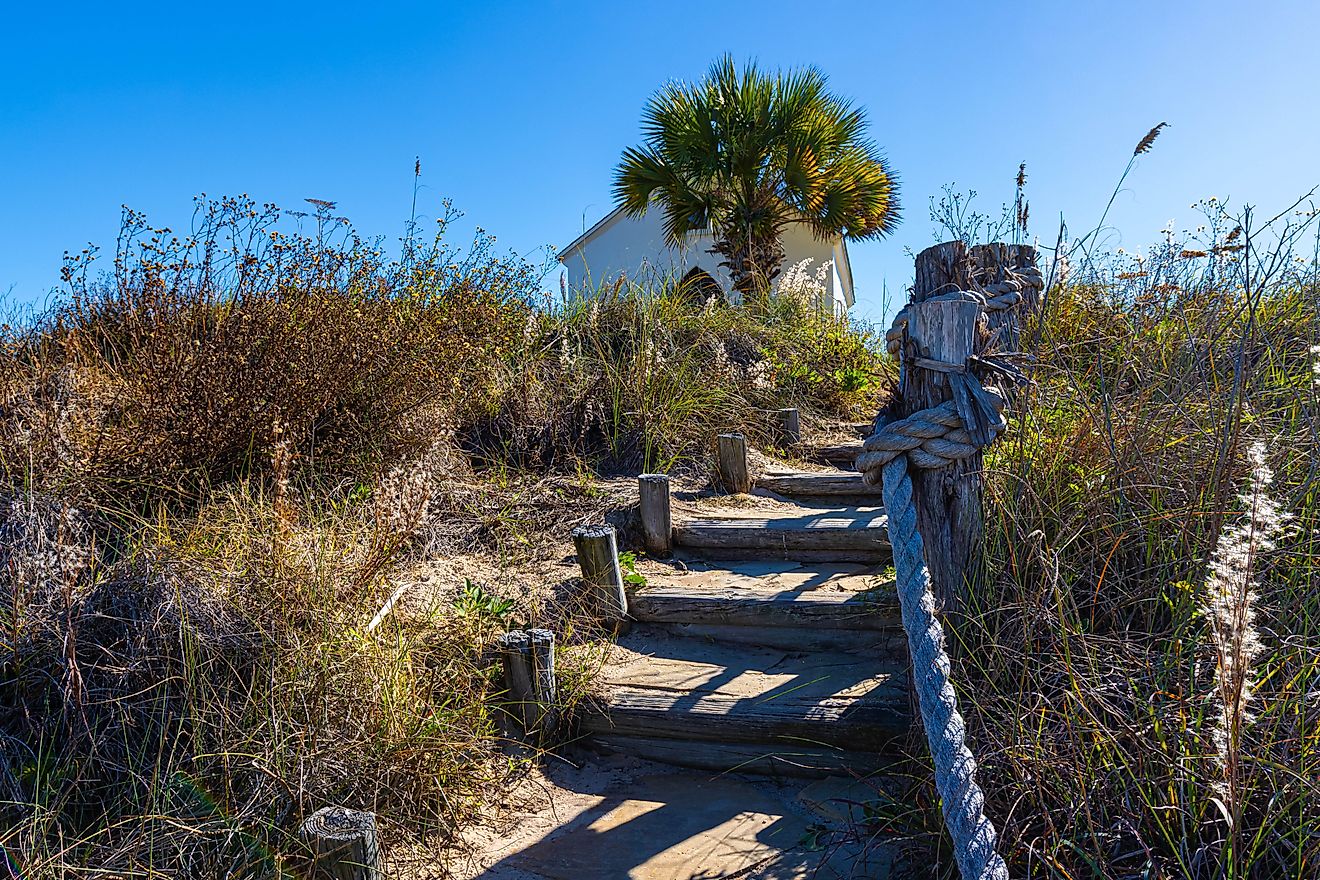Flags, Symbols & Currency of Estonia
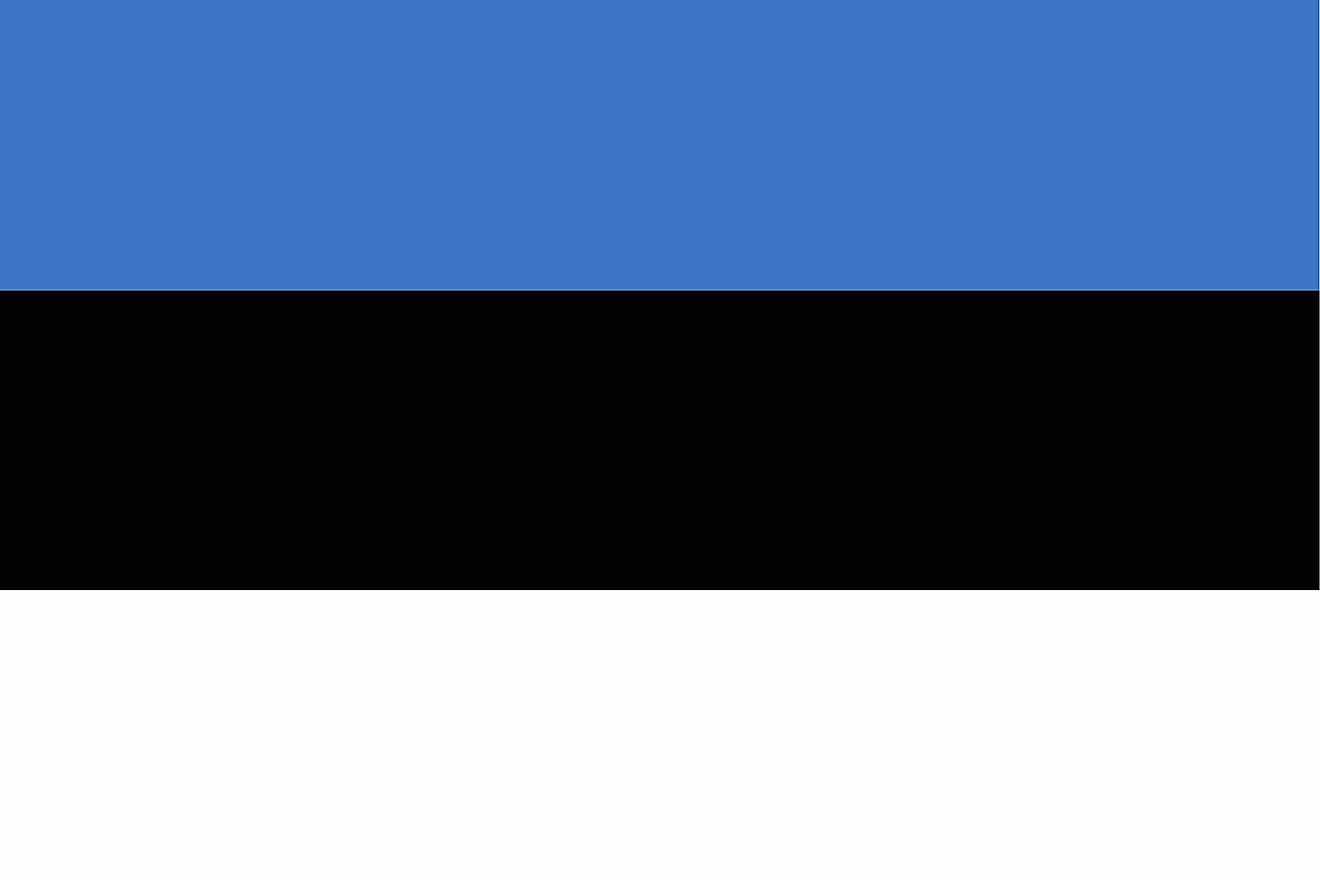
The National Flag of Estonia was officially adopted on August 7, 1990.
The National Flag of Estonia is a horizontal tricolor featuring three equal horizontal bands of blue (top), black, and white. The blue color of the flag represents faith, loyalty, and devotion, besides being reminiscent of the sky, sea, and lakes of the country. The black color symbolizes the fertile black soil of the country and the dark past and suffering endured by the Estonian people. The white color represents virtue, purity, hard work, and Estonia's long struggle for freedom and independence. It also symbolizes the snow that covers much of Estonia for a large part of the year, as well as summer nights illuminated by the midnight sun. The flag has a width-to-length proportion ratio of 7:11.
History of the Flag of Estonia
The current flag of Estonia first appeared on September 17, 1881, when it was used as a symbol of the Estonian Students Society in the city of Tartu. The design was used as the country’s national flag on February 24, 1918, when the Estonian Declaration of Independence was issued, and then formally adopted as the national flag of Estonia on November 21, 1918. However, the flag was banned when the Soviet Union invaded Estonia in 1940 and was replaced by the Estonian SSR flag. During the German occupation of Estonia, the country’s flag was recognized only as of the ethnic flag of the people of the nation. Once more, under Soviet rule, the flag of Estonia was banned again. It was only after the Soviets retreated from Estonia that the flag was readopted as the national flag of the newly independent nation on August 7, 1990.
Symbols of Estonia
The National Coat of Arms of Estonia
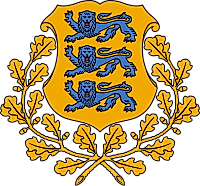
The National Coat of Arms of Estonia was officially adopted on June 19, 1925, and was restored on August 7, 1990. It features a golden shield, surrounded by golden oak branches. Within the shield, there are three blue lions, which are left-faced and with red tongues and are stacked on top of each other. The three blue lions on the shield are ancient Estonian symbols and are derived from the greater coat of arms of the Danish King Valdemar II, who ruled over Tallinn (Northern Estonia) in 1219. The first of the three lions symbolize the courage in the fight for freedom during ancient times, the second for courage in the uprisings in Harjumaa, and the third for courage in the fight for freedom during modern times. The oak branches represent perseverance and strength.
National Anthem
- Anthem Title: "Mu isamaa, mu õnn ja rõõm" ("My Fatherland, My Happiness and Joy")
- Music Composer: Fredrik (Friedrich) Pacius.
- Lyricist: Johann Voldemar Jannsen
- Date of Adoption: 1920
"Mu isamaa, mu õnn ja rõõm" ("My Fatherland, My Happiness and Joy") is the national anthem of Estonia. The anthem have been composed by Fredrik (Friedrich) Pacius. The lyrics have been authored by Johann Voldemar Jannsen. The anthem was officially adopted as the national anthem of Estonia in 1920.
"Mu isamaa, mu õnn ja rõõm" (Estonian)
First Verse:
Mu isamaa, mu õnn ja rõõm,
kui kaunis oled sa!
Ei leia mina iial teal
see suure, laia ilma peal,
mis mul nii armas oleks ka,
kui sa, mu isamaa!
Second Verse:
Sa oled mind ju sünnitand
ja üles kasvatand;
sind tänan mina alati
ja jään sull' truuiks surmani,
mul kõige armsam oled sa,
mu kallis isamaa!
Third Verse:
Su üle Jumal valvaku
mu armas isamaa!
Ta olgu sinu kaitseja
ja võtku rohkest õnnista,
mis iial ette võtad sa,
mu kallis isamaa!
"My Fatherland, My Happiness and Joy"
First Verse:
My native land, my joy - delight,
How fair thou art - how bright!
For nowhere in the world around
Can ever such a place be found
So well belov'd, from sense profound,
My native country dear!
Second Verse:
My tiny crib stood on thy soil,
Whose blessings eased my every toil.
With my last breath my thanks to thee,
For true to death I'll ever be,
O worthy, most belov'd and fine,
My dearest country mine!
Third Verse:
May God in Heaven thee defend,
My own, my dearest land!
May He be guard, may He be shield,
For ever bless and guardian wield
Protection for all deeds of thine,
My own, my dearest land!
The Currency of Estonia is the Euro
The current official currency of Estonia is the euro (€, EUR). The Estonian euro currency entered into circulation on January 1, 2011.
The kroon (EEK, Kr) was the official currency between the years of 1928 and 1940, and also between 1992 and 2011. The Euro started circulating with the kroon between January 1 and 14, 2011, after which Estonia made the euro its sole legal tender. Before euro coins were introduced, the one kroon coins struck in cupro-nickel had already been demonetized on May 31, 1998, while the five krooni coins were rarely being circulated. The Eesti Pank exchanges kroon coins and banknotes of any amount into the Estonian euro.
Historical Currencies of Estonia
During the German occupation of Estonia, the German mark was declared as the currency of Estonia on September 15, 1918. On November 30, 1918, the Estonian Provincial Government introduced the Estonian mark as the national currency. The Eesti Pank was established on February 24, 1919, to regulate the circulation of the currency. Due to the rapid inflation of the mark, a new currency named kroon was introduced. On January 1, 1928, the Kroon became Estonia's official legal tender. The term ‘Kroon’ is derived from ‘corona’ which is a Latin word meaning crown. At a rate of 100 marks being equivalent to 1 kroon, the first kroon replaced the Estonian mark which was the country's official currency between 1918 and 1927. The kroon was subdivided into 100 cents. The kroon was exchanged for foreign currency by the Bank of Estonia so that it could secure credibility. The first krooni coins issued in 1928 were 25 senti pieces of nickel-bronze. In 1929, the bronze 1 senti were issued followed by the 1930 silver 2 krooni, 1931 nickel-bronze 10 senti, and bronze 5 senti. In 1933 silver 1 kroon, the 1934 aluminum-bronze 1 Kroon, and bronze 2 senti, 1935, nickel bronze 20 senti, and eventually 1936, nickel-bronze 50 senti. The new 1 senti coin was issued on July 25, 1940, which was a few days after the Estonian SSR was founded. As for the krooni banknotes, in 1928, ten krooni notes were introduced by the Eesti Pank followed by the 1929, 50, and 5 krooni, the 1932, 20 krooni, and 1935, 100 krooni.
On June 20, 1992, Estonia which was now an independent country reintroduced the kroon as its official currency; the Soviet ruble was replaced at a rate of 1 kroon being equivalent to 10 Soviet rubles. Denominations of 1 kroon, 50, 20, 10, and 5 senti were introduced in the country in 1992. The senti were struck in aluminum-bronze while the kroon was cupro-nickel. However, 20 senti struck in nickel-plated steel, and 1 kroon in aluminum-bronze was introduced in 1997 and 1998 respectively. Following the downfall of the Soviet Union and Estonia gaining its independence, the kroon was reintroduced again in circulation. Second krooni banknotes were introduced in 1992 in denominations of 500, 100, 25, 10, 5, 2, and 1 kroon. The 50 krooni note was introduced in 1994 and was issued only once.
